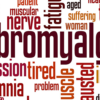Acupuncture Treatment for Knee Pain
Acupuncture can be an effective approach for relieving knee pain, a common issue caused by various factors such as arthritis, injuries, overuse, or chronic conditions. The practice involves inserting thin needles into specific points on the body, which can help manage pain and encourage healing. Here’s how acupuncture helps alleviate knee pain:
- Pain Relief through Nerve Stimulation: Inserting acupuncture needles stimulates nerve fibers, which can alter the pain signals sent to the brain. This can decrease the perception of pain. Additionally, the stimulation can promote the release of endorphins and other neurochemicals, acting as natural painkillers.
- Enhanced Circulation: Acupuncture is believed to improve blood flow, which helps in reducing inflammation and swelling in the knee area. Enhanced circulation allows for better delivery of nutrients and oxygen to the knee, supporting tissue repair and reducing pain.
- Reducing Inflammation: By modulating the body's immune response, acupuncture may help decrease the production of pro-inflammatory chemicals in the body. Reduced inflammation can alleviate pain and improve knee function.
- Muscle Relaxation: Acupuncture can help relax tight muscles around the knee. This relaxation can relieve pressure on the knee joint and surrounding tissues, reducing pain and improving mobility.
- Qi Flow Restoration: Traditional Chinese Medicine posits that pain and illness result from blockages in the body’s vital energy flow, or Qi. Acupuncture aims to restore the balance of Qi, addressing both the symptoms and the underlying causes of knee pain.
- Holistic Healing: Acupuncture treats the individual as a whole, considering not just the physical symptoms of knee pain but also factors like lifestyle and emotional well-being. This holistic approach can lead to more effective and comprehensive pain management.
Decicco Acupuncture manages pain through a combination of biological mechanisms, including the stimulation of nerve endings, which alters pain perception; the release of endorphins, the body's natural painkillers, which decrease the feeling of pain; improved blood flow, which aids in healing and reduces discomfort; reduction of inflammation, a key contributor to pain; relaxation of muscle tension to alleviate stiffness and spasms; and the regulation of neurotransmitters, which can help balance the body's response to pain. Through these actions, acupuncture provides a holistic approach to pain relief, targeting both the symptoms and underlying causes of pain.




